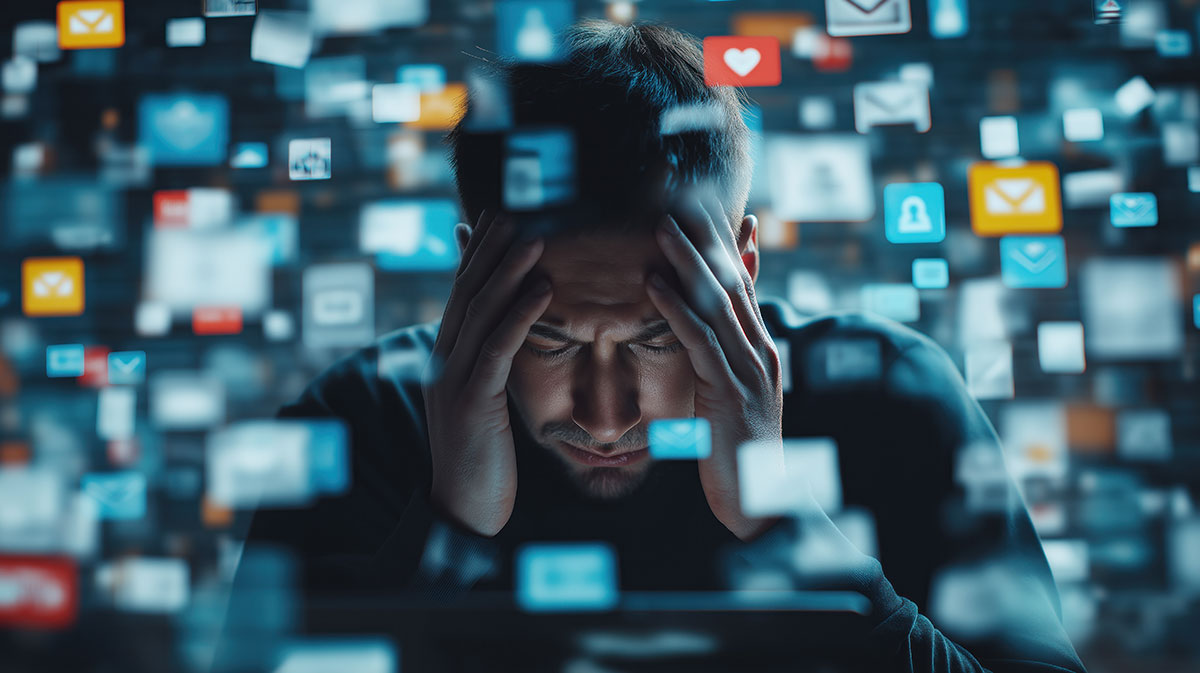In today’s world, we are more connected than ever before. Smartphones, social media, email, and constant notifications keep us engaged around the clock. While technology has many benefits, it also poses challenges for mental health. Too much screen time can contribute to stress, anxiety, poor sleep, and even worsen symptoms of depression. Practicing a digital detox, or intentionally reducing and managing technology use, can help restore mental clarity and improve overall well-being.
As a psychiatrist, I have seen how technology overuse can affect patients. It can increase feelings of overwhelm, create unrealistic comparisons with others, and interfere with the brain’s natural ability to rest and process emotions. Taking intentional steps to create balance in our digital lives is essential for maintaining mental health in a connected world.
The Impact of Technology on Mental Health
Constant engagement with digital devices affects the brain in several ways. Social media can create pressure to compare ourselves with others, leading to decreased self-esteem and increased anxiety. Notifications and messages interrupt focus and prevent sustained attention, which can exacerbate stress. Late-night screen use also affects sleep by suppressing melatonin production, the hormone responsible for regulating sleep-wake cycles.
Research shows that excessive screen time is linked to higher levels of depression and anxiety. It can also interfere with cognitive processing and emotional regulation. These effects are especially pronounced in people already managing mood disorders or high stress levels. Recognizing these impacts is the first step toward creating healthier habits.
What a Digital Detox Can Do
A digital detox is more than just stepping away from screens. It is about creating intentional boundaries that allow the mind to rest, refocus, and reconnect with the present moment. People who practice digital detox regularly often report reduced stress, improved mood, better sleep, and enhanced clarity of thought.
For patients in recovery from depression or anxiety, a digital detox can help break cycles of rumination and constant comparison. For others, it provides an opportunity to strengthen relationships, focus on personal interests, and engage in activities that foster emotional well-being.
Practical Steps for a Digital Detox
Implementing a digital detox does not require completely abandoning technology. It is about balance and conscious use. Here are practical strategies I recommend:
- Set Screen Time Limits: Use built-in tools on smartphones or apps to monitor usage and set limits for social media or non-essential apps.
- Establish Device-Free Times: Designate periods of the day, such as during meals or the hour before bed, where devices are turned off.
- Prioritize Real-Life Connections: Focus on face-to-face interactions and meaningful conversations instead of digital communication.
- Create Tech-Free Zones: Keep bedrooms and certain areas of the home free from devices to improve sleep and reduce distractions.
- Mindful Use of Social Media: Be intentional about what you consume online. Unfollow accounts that create stress or negative comparison.
- Engage in Offline Activities: Reading, cooking, gardening, or walking outdoors provides mental rest and promotes emotional well-being.
- Use Technology Purposefully: When using devices, focus on activities that provide value or joy rather than mindless scrolling.
Starting small is key. Even short periods of reduced screen time can have noticeable benefits. Over time, these changes can improve focus, emotional regulation, and overall mental clarity.
Digital Detox for Providers and Patients
For providers, discussing technology use with patients should be part of routine mental health assessment. Understanding how digital habits impact sleep, mood, and stress allows providers to make personalized recommendations. Encouraging patients to experiment with screen-free periods and mindful use supports recovery and reinforces self-care practices.
For patients, self-monitoring and reflection are important. Journaling about emotions and thoughts during technology breaks can reveal patterns and help identify triggers that contribute to stress or anxiety. Providers can integrate these insights into therapy and treatment planning.
The Mind-Body Connection
A digital detox highlights the connection between mind and body. Reducing screen time allows the nervous system to rest, decreases overstimulation, and supports natural circadian rhythms. Mindful activities such as walking outside, stretching, or cooking encourage physical engagement while also calming the mind.
The combination of reduced digital exposure and intentional offline practices fosters a sense of presence. It helps individuals notice their environment, emotions, and thought patterns, which is crucial for self-awareness and mental health recovery.
Maintaining Balance in a Connected World
Technology will not disappear, and complete avoidance is neither realistic nor necessary. The goal is to create a balanced approach that maximizes the benefits of connectivity while minimizing its negative impacts. Regular reflection on digital habits, intentional use, and mindful engagement are key strategies for maintaining this balance.
A sustainable digital detox is not about strict rules or deprivation. It is about choosing when and how technology supports mental health rather than allowing it to dominate attention and energy. Establishing routines and boundaries ensures that technology serves as a tool rather than a source of stress.
Final Thoughts
In our connected world, mental clarity requires conscious effort. Practicing a digital detox provides an opportunity to reclaim focus, reduce stress, and support overall well-being. For patients and providers alike, it is a valuable strategy to complement therapy, medication, and lifestyle practices in mental health care.
Taking intentional steps to balance screen time with offline activities can enhance mood, strengthen resilience, and improve quality of life. By creating space for reflection, connection, and mindfulness, individuals can navigate the digital world without sacrificing their mental health.
A digital detox is not a temporary fix. It is a practice of awareness, intentionality, and self-care that helps us reconnect with ourselves, our communities, and the world around us. In this balance, mental clarity and emotional resilience can flourish.
